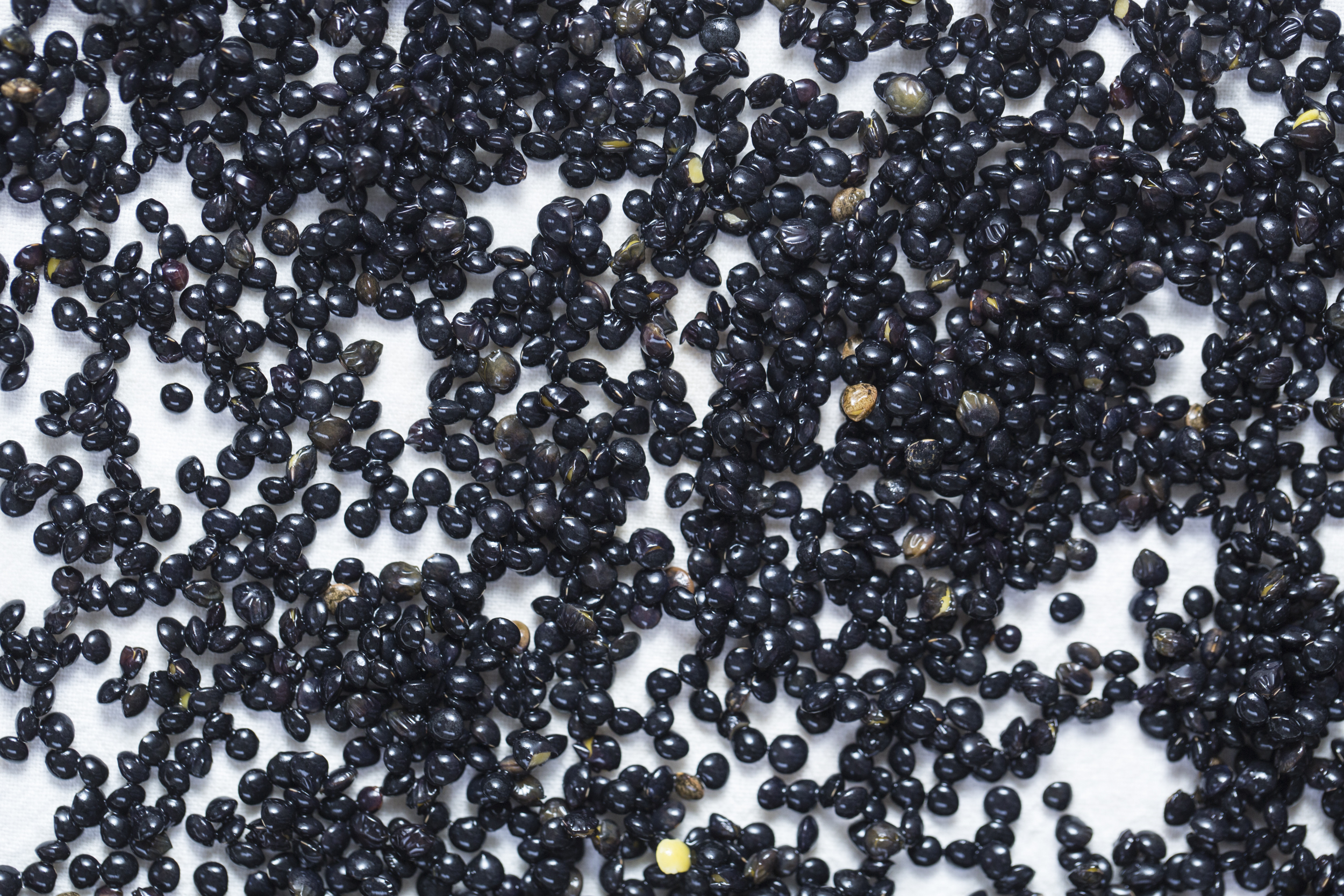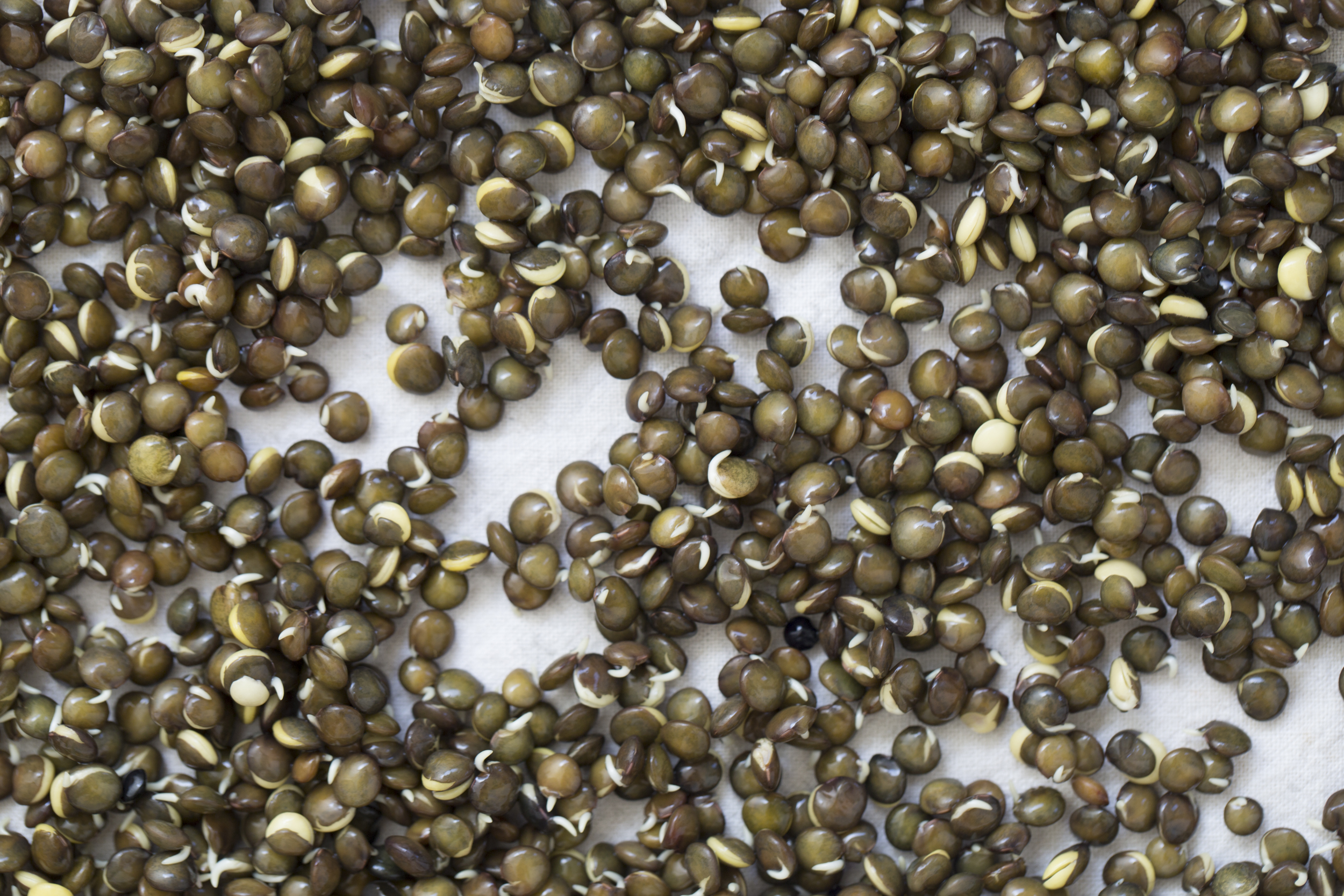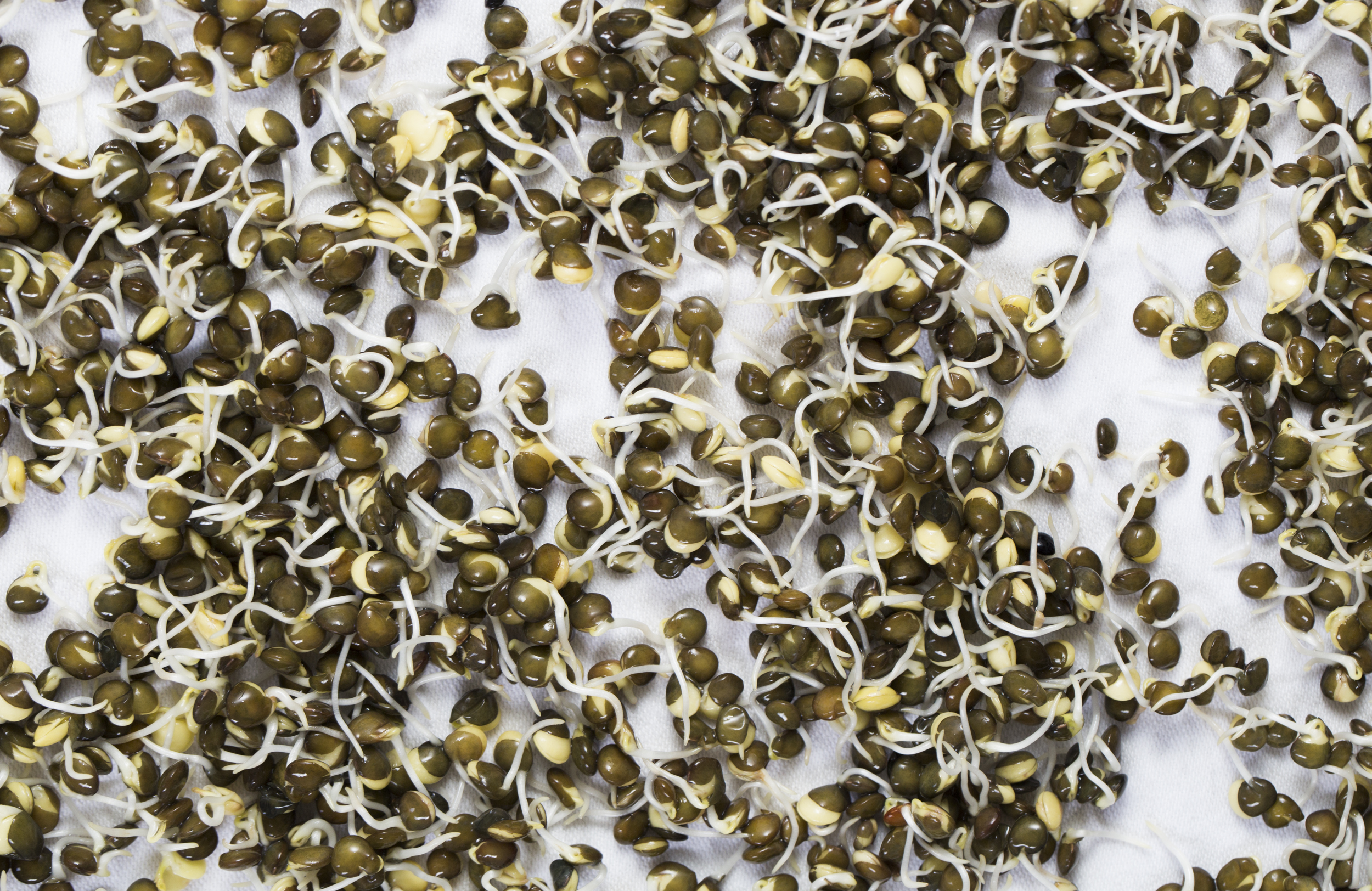Sprouted Legumes…It’s Something To Do!
Sprouted legumes, beans and grains transport me to the safest place on earth — the small, independently owned health food store, with their veggie wraps, macro bowls and unbridled optimism. In my current cooped-up housewife-gone-wild state of mind, I am finding comfort in grass roots cooking. Healthy eating will make you feel secure in a world that is spinning out of control, if not only for the fleeting duration of a single meal.
I am, of course, trying to avoid frequent trips to the market, which means I am getting creative with what I have. This brings me to the project du jour – sprouting. If you are like me, suddenly saddled with the responsibility of daily childcare at the expense of your own work, you will relish a project that spoon feeds you small doses of accomplishment and near instant gratification (plus, this is fun for the little ones too. It’s like growing a micro garden). When you sprout legumes and grains, you take them from their stable seed form and germinate them to become a micro seedling. Today you have bone dry lentils, and in two days you’ll have a big ol’ jar of curly tailed (living!) sprouts. It can be empowering to take something shelf stable and bring it to life.
Beyond cheap thrills, there are concrete health benefits to sprouting. Legumes, beans and nuts can be challenging to digest (you know what I am talking about). They contain “antinutrients,” compounds that block your ability to absorb essential nutrients, specifically calcium, iron, phosphorus, and zinc. Unless you are eating beans exclusively (and some of us might be right now), you aren’t in danger of malnutrition, but you could be getting more from each serving. Sprouting breaks down antinutrients and enzymes, making the legumes easier on the tummy, and rendering vitamins and minerals bioavailable. Sprout beans before cooking, and you might change your relationship to them forever.
Here’s the deal on what to sprout. You can sprout almost any legume, seed, or nut, though the results and the way you use them is varied. I am using what I have in my pantry, but there is a whole world of seeds sold specifically for this purpose, from onion seeds to the age old coop mascot, alfalfa. With a fridge of various sprouts, some crunchy and some wispy, I find countless ways to use them. While sprouted beans should be cooked as you would a dried bean before serving, I toss sprouted beluga lentils in with my cooked brown rice for texture and color. I pan fry sprouted farro as a chewy, crispy topping for salads. I soak my almonds and slow roast them for an addictive and delicious snack.
Note: Some dried legumes intended for cooking are irradiated to prevent sprouting on the shelf (this is not bad for you, it will just inhibit sprouting). This will be disclosed on the package. For guaranteed success, buy non irradiated legumes, or seeds sold specifically for sprouting.
Nuts
Nuts won’t sprout in the traditional sense (meaning, they won’t grow visible roots), but extended soaking makes them more nutritious, more digestible, and exponentially tastier. As soon as I get a new bag of nuts, and store them in a cool dark place, or in the freezer (yes, always freeze nuts if not using them immediately. Their oils are not stable and they do go bad).
Soak
- Soak raw nuts submerged in warm, salted water. Soak 2 cups of nuts in 3 cups of warm water with 3/4 tsp of fine sea salt.
- Place the nuts on your countertop for 12 hours.
- Drain and Dry
- Strain the nuts and pat them dry with a kitchen towel.
- Spread the nuts on a baking sheet in a single layer and dry them out in the oven (or food dehydrator) set to 250°F for five hours or more (wait until they are completely cool to test for doneness, they will be soft while warm).
- You can raise the heat and roast them faster, but the flavor will be more toasted, less neutral.
Take it one step further and make my seasoned lemony roasted almonds, perfect for salads and snacking throughout the day (I always have these in the house). After soaking and drying as described above, toss the nuts with olive oil, lemon zest, lemon juice and another pinch of fine sea salt. Let them marinate for 30 minutes. Bake for 2 hours or more at 200°F, until the nuts are deep brown in color. Sprinkle nutritional yeast on them just after pulling them out of the oven.
Legumes and Grains
Lentils, dried chickpeas, farro, wheat berries, and mung beans, these are just a few pantry items waiting to achieve their optimal sprouted state. Once sprouted, you can eat them raw, toss with cooked grains for texture, sprinkle them on salads, or use them as a crunchy topping for soups. You can also use them as a substitute for cooked legumes in recipes like veggie burgers, lentil fritters, and blended dips. Shallow pan fry them and they make a guilt-free crispy garnish.
Each legume/grain will sprout at a slightly different rate, so the key is to just keep an eye on them, taste along the way and decide for yourself when they are done. In general small legumes like red, green or beluga lentils (my personal favorite) will soak for one day and begin to sprout in two. Larger legumes like chickpeas won’t start to visibly sprout for two to three days.
The basic technique goes like this:
- Soak
- Soak the legume/grain in a glass jar with one part legume to 3 parts water for 8 hours before straining.
- I affix a piece of light cotton cloth or two layers of cheesecloth to the top of the jar with a rubber band. Cheesecloth allows me to strain the water from the jar without losing any valuable grains or legumes (tap the top to make sure nothing is sticking to the top where it will dry out faster). If you use cotton cloth, you will have to strain the legumes into a sieve and then return them to the jar after each rinse.
- You can purchase sprouting tops for mason jars, a worthwhile investment if you are integrating this into your daily life, but if you’re a recreational sprouter, I think cloth works just fine.
- Wash, Strain, Repeat.
- After the initial soak, the goal is to keep the contents of the jar hydrated, to rinse them clean regularly, and to eliminate excess water in the jar.
- Twice a day (or more!), fill the jar with water, swish and drain completely.
- Store
- The legumes/grains can be kept at room temperature in a spot with decent air circulation while sprouting. Sunlight won’t bother them.
- Once they are sprouted to your liking, dump them out onto a kitchen towel and spread them in a single layer. Let them dry out for about 30 minutes. Lay a damp piece of paper towel on the bottom of a food storage container. Spread the sprouts out and seal the container.
Beans
With the exception of mung and adzuki beans, I cook sprouted beans of the larger variety (I am talking cannellini, kidney, black beans). Think of the sprouting time as an amplified pre-soak, breaking down the starch/carbohydrates, increasing dietary fiber and making the beans much easier to digest (thus creating a much more harmonious quarantine).
The process for sprouting larger beans is the same as above, but once sprouted, prepare them as you would a dried bean, simmering in salted/seasoned water or broth. The cook time on the beans will be much shorter than it is with dried beans, so just keep an eye on them as they simmer. Eat them as they are, or use them to make dips. Once sprouted, they can be stored in a jar in the fridge (as long as there is no standing water in the container), until you are ready to cook.
Sprouted Greens
To sprout greens (chive, alfalfa, broccoli etc), you will want to purchase seeds sold specially for this purpose. They can be tough to find online right now (the crunchy “Prepper” contingent seems to have beat me to it), but I got my hands on some broccoli seeds in just about a week. Dip into your stockpile of sprouting seeds when you are running low on produce but need a touch of green. From a health perspective, the tiny sprout contains an exponentially higher concentration of nutrients than the mature plant itself (in the case of broccoli that is huge).
The sprouting method is the same as with the legumes, but you want to use a roomier vessel to seed ratio to make sure there is optimal air circulation as they grow (otherwise you risk mold taking over).



